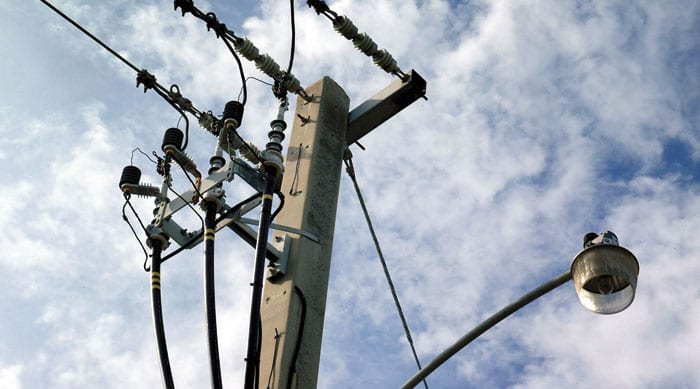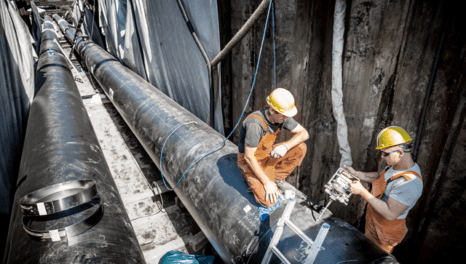Case Study: Modelling, managing and mitigating fault levels
In January 2013, Western Power Distribution (WPD) began a project called FlexDGrid supported by £17 million of funding through tier two of the Low Carbon Networks Fund (LCNF) - the precursor to the National Innovation Competition.
2nd August 2017 by Networks

The aim was to enable to more synchronous generation to connect to the 11kV network in and around Birmingham City Centre without the need for costly reinforcements by modelling, managing and mitigating fault levels.
Fault levels refer to the volumes of current that flow through a network when a short circuit occurs as “all the energy and current rushes to that point”, WPD innovation and low carbon networks engineer Jonathan Berry explains to Network.
“When you connect a synchronous generator, such as a combined heat and power plant, that adds an additional current contribution when a fault occurs.” This can raise fault levels beyond what the network is able to cope with, in which case expensive upgrades are required for new generation to be connected safely.
In one instance, WPD was forced to spend £4 million and three years replacing transformers at a primary substation in Birmingham to accommodate less than 3MW of new distributed generation. The upgrade involved the early retirement of still healthy assets and increased network losses by 745,000kWh per year.
Modelling
In an effort to avoid the need for such reinforcements, the FlexDGrid project sought to better understand how the 11kV network in Birmingham responds to faults and how this changes with the connection of new synchronous generation.
The company has itself admitted that its models of the grid were previously “built on lots of network assumptions”, leading to conservative estimates of the volume of generation which could be safely connected without upgrades.
To resolve the issue, WPD increased the detail and granularity of its models, feeding in up-to-date network arrangement and connection data. It says removing uncertainty and assumptions from its models has enabled the release of more connection capacity.
The enhanced modelling also facilitated the creation of a fault level guidance tool for planners and engineers and led WPD to update the fault modelling policy for all four of its license areas.
Management
The second strand of the project saw WPD install fault level monitors at ten primary substations sites to create an active fault level management system. The devices, which were developed as part of a separate tier one LCNF project, work by triggering small disturbances on the network which can then be used to calculate fault levels.
“Previously we’ve only been able to measure fault level at a specific point when a fault has actually happened,” says Berry. “Now we can generate the make and break values that would occur if a fault happened, without a fault actually happening on the network.”
Among other things, this enabled the company to verify the models developed during the initial phase of the project by comparing the real-world data to the models’ predictions.
“It also allowed us to look at how we can offer flexible and alternative connections to customers who have previously been restricted or limited from connecting to the network,” Berry adds.
WPD is now examining the possibility of developing a mobile fault level monitor which can been moved between sites.
Mitigation
For the final stage, the company deployed fault current limiters to “effectively act as a sponge to soak up the excess fault level”, thereby increasing the connection capacity of the network.
Berry says the initial plan was to trial three of the devices but due to some “manufacturing and technical difficulties” the number was reduced to just three.
Nevertheless, WPD was still able to meet its target of increasing the connection capacity by 50MW using the technology. He says the fault current limiters may be added to WPDs suite of standard assets following the success of the trial.
The project reached its conclusion at the end of March and the closedown report was published last month.
Comments
Login on register to comment
Related content

Heat
Electric storage heating – a Cinderella solution
Why has electric storage heating been overlooked as we seek to tackle decarbonising domestic heat?

Heat
Prospects bright for landmark East London Heat Network
New Vattenfall-Cory partnership marks step towards record-breaking heat network capable of serving over 10,000 homes

Heat
New construction director at Switch2 Energy
Appointee brings experience from Vattenfall and Eon
Related supplier content
![‘Learning by doing’ on the road to net zero [test product]](https://networksonline.s3.amazonaws.com/products/images/3.jpg)
People & Skills
‘Learning by doing’ on the road to net zero [test product]
DSO director Andrew Roper discusses 'Learning by doing'

Power
Load patterns and lockdown: how Covid-19 is impacting electricity networks
Insights into dynamics on the low voltage network as the outbreak unfolds

Downloads
Protect electrical equipment from insulation failure
Insulation faults are a major cause leading to the eventual failure of electrical equipment. Partial discharge (PD) is a very reliable indicator of developing insulation faults. Regular PD testing allows users to detect and analyze PD activity